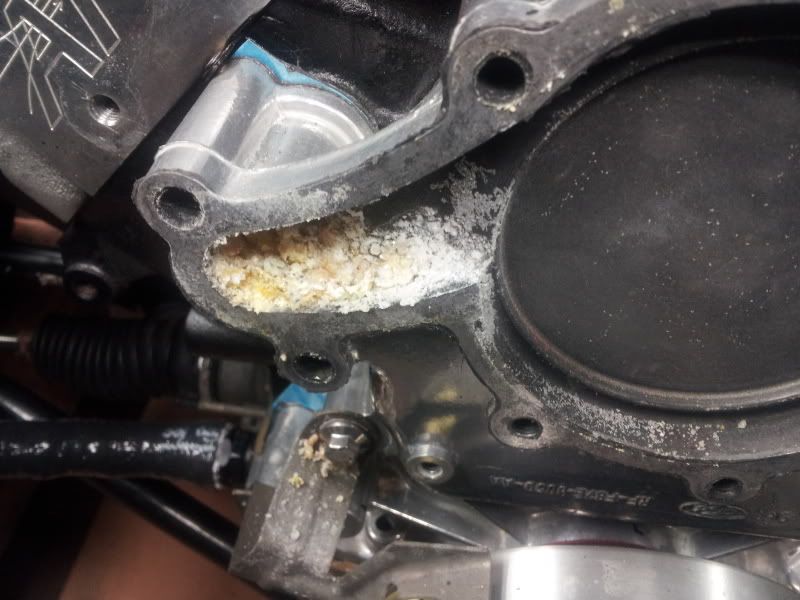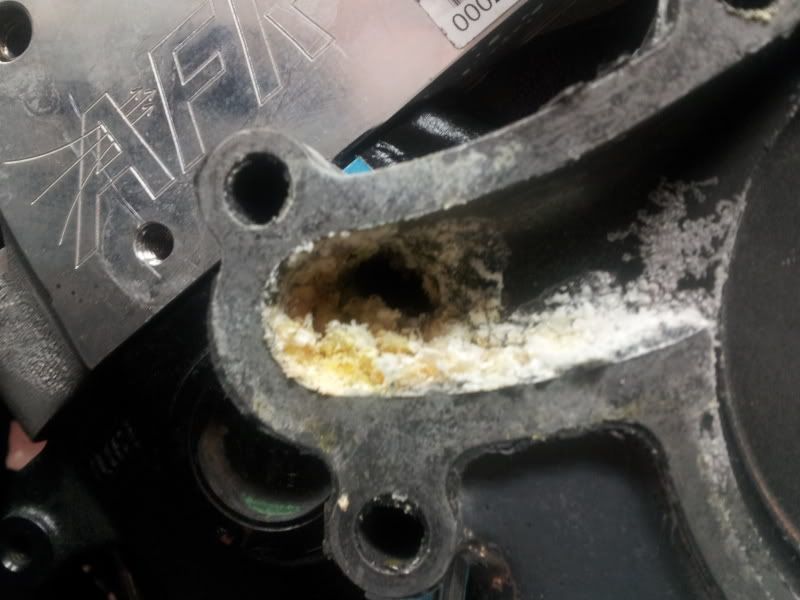i replaced the long block in my car. it runs, has good oil pressure and all, but it gets hot. Friday night, after hard wiring the electric fan, i drove to a friends house. the gauge is showing hot so we used his laser thermometer and hit the block, intake, upper and lower rad hose, t-stat housing, top of radiator and upper and lower part of the tanks. all were in the right temp ranges. it's not spitting coolant any where. i have replaced all the hoses, bypassed the heater core, new water pump, new t-stat and gasket. it's not leaking anywhere. thought it might be the sensors, replaced those and still showing hot. the only thing not replaced is the radiator. im thinking that the oil and coolant mix may have clogged the radiator and im getting a flow problem causing the getting hot. it gets hot till you step on it and then the gauge climbs fast. any ideas? im thinking about cleaning the radiator with an ol'timers type of fix. i heard using cascade powder will clean it out. put some of the powder in, run it for an 30min-hour, drain it, fill with water, run it for 30-hour, drain it and fill with coolant and it should be good. anyone got any ideas what this problem could be and your ides on what my next step should be.
Announcement
Collapse
No announcement yet.
cooling problem
Collapse
X
-
I chased down an overheating issue on my car for a long time. It would run great until I drove it and then it would get hot. I ended up changing out the radiator and now all is well in the world. I wouldn't suggest putting cascade in there. I wouldn't want that shit going through my block. Stock replacements are cheap.
-
it's doesn't really get hot hot, just hotter then i want. i don't know the actual temp, but sitting in the driveway at idle for about 30 minutes, it gets up to the "n" and "o" on the gauge. you drive it easy, it stays about the same. when you get on it, like running it first into second and shutting down, the gauge climbs. it has a 4 core radiator on it. with the laser thermometer, the hottest part was the block at 230.Originally posted by greenbullitt View Posthow long does it take to get hot?
Comment
-
If it sat with the radiator dry for a while, the calcium, that would have been in a liquid type state when it had coolant in it, dries and hardens. It does not softened back up once dried out. That is where the term Rodded comes from with radiator shops. They physically remove the tanks and drive metal rods the size of the passages through the radiator to knock the calcium, scale, and build up out of them. I fought a similar battle with my Buick when I did the motor build in it years ago. The factory 2 core radiator weighed more than the new 3 core that I put it in from the build up inside. If I'm trying to clean a cooling system I use dawn dish soap in the coolant. This is only if one is dirty/muddy looking. As far as sediment and build up goes, flushing won't get you very far.
Comment
-
well, it never sat completely empty. honestly, i can't remember what the cooling system looked like months ago. i can say the t-stat housing and the water pump were rusted/pitted/in bad shape. im sure the radiator was about the same. i will post a pic of what the water pump looked like and what the gauge shows sitting idle in the driveway after about 30 or so minutes.Originally posted by shumpertdavid View PostIf it sat with the radiator dry for a while, the calcium, that would have been in a liquid type state when it had coolant in it, dries and hardens. It does not softened back up once dried out. That is where the term Rodded comes from with radiator shops. They physically remove the tanks and drive metal rods the size of the passages through the radiator to knock the calcium, scale, and build up out of them. I fought a similar battle with my Buick when I did the motor build in it years ago. The factory 2 core radiator weighed more than the new 3 core that I put it in from the build up inside. If I'm trying to clean a cooling system I use dawn dish soap in the coolant. This is only if one is dirty/muddy looking. As far as sediment and build up goes, flushing won't get you very far.
Comment





Comment